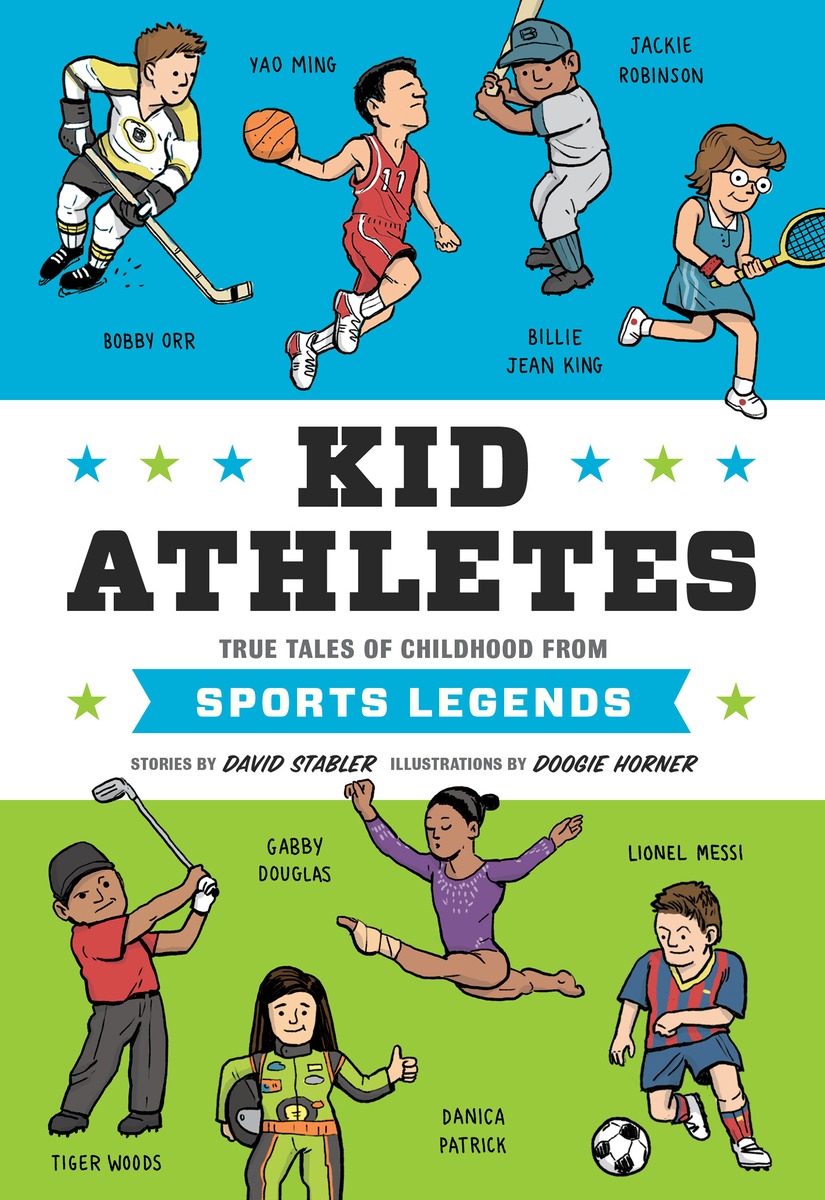| ________________
CM . . .
. Volume XXII Number 10. . . .November 6, 2015
excerpt:
Kid Athletes has biographies of some world-famous athletes, such as Muhammad Ali and Michael Jordan. The only Canadian is Bobby Orr. The book has an “Index” and a “Bibliography” which lists other books about the athletes in the book, and it has watercolour illustrations on each page. It is intended to appeal to all children, both boys and girls, who have an interest in sports. Eleven chapters are about boys, and five are about girls. It has interesting bits of information few will have known about, even parents. One example is about the legendary New York Yankee star Babe Ruth. When he was a boy, he was so difficult to handle that his parents sent him to reform school. It was here that he learned how to play baseball and, as a result, became one of the game’s greatest stars. For Canadian readers, the chapter on Jackie Robinson comes up short. Before becoming the first black man to play baseball in the major leagues, where he faced considerable discrimination, he played for a minor league team, the Montreal Royals. What made Robinson so outstanding, in addition to his baseball skills, is that he paid no attention to all the discrimination even though it must have hurt him psychologically. He was an outstanding individual. Kid Athletes is meant for recreational reading. It is well-written and easy to read. Children will learn, if they don’t know already, that people are born with different skills. Most have little or no athletic ability while others are truly gifted. The athletes in the book usually excelled in one sport, and most sports are included; Babe Didrikson Zaharias, a most remarkable athlete, was a star in many. There are 16 chapters of around ten pages each divided into three sections: “It’s Not Easy Being A Kid”, “Family Matters” and “Practice Makes Perfect”. These headings need little explanation. Being a kid was for many athletes a difficult time. They may have come from poor families or have been raised by single parents and did not have the advantages children from loving, happy families had. Jackie Robinson is one example. Family matters were also important. How a child athlete was regarded by his/her parents was important to her/his psychological development. Michael Jordan’s skills, for example, were ignored by his father while those of his brother were praised. That was very hard on Michael. Practice helped Lionel Messi, who is very small for a professional athlete, become one of the world’s best soccer players. The fans of Barcelona’s soccer team think that he is perfect. The chapter on Bobby Orr does the great hockey player an injustice. Orr was a defenceman, but a very offensive defenceman who scored many goals. One year he scored 46 goals, a huge number for someone playing defence and more than many forwards. In addition, he was also given credit for many assists, amassing 102 in one year. His scoring ability should have been mentioned. There is one small error. The book says that it takes 14 hours to go from Rosario to Buenos Aires in Argentina. Since the distance is around three hundred kilometres, the drive should only take about three hours. Mention is made of a fungo bat. This is a bat that is lighter, longer and thinner than a regular bat and is used by coaches to hit balls to fielders during practice. It is unlikely that most children and adults will have heard of this bat, and so a definition would have been useful. Recommended. Thomas F. Chambers, an author and retired college teacher lives in North Bay, ON.
To comment on this title or this review, send mail to cm@umanitoba.ca.
Copyright © the Manitoba Library Association. Reproduction for personal use is permitted only if this copyright notice is maintained. Any
other reproduction is prohibited without permission.
CM Home |
Next Review |
Table of Contents for This Issue - November 6, 2015
| Back Issues | Search | CM Archive
| Profiles Archive |
